- Home
- Francis Spufford
The Child that Books Built Page 2
The Child that Books Built Read online
Page 2
Nor does it necessarily prove anything about books that my reading childhood was succeeded by a tuned-out adulthood. In fact every account of addiction that lets the thing the addict craves provide the plot, in a sense tells the wrong story; or at any rate tells a half-story, made up of effects without causes. Thomas De Quincey’s Confessions of an English Opium Eater does not tell you why De Quincey turned to laudanum, except by the inferential means of putting you amid the circumstances of his addiction. You can see that taking opium fills a hungry gap in De Quincey’s life; you can learn the dimensions of the gap from the fact that opium fits it. But you can’t learn why the gap is there. Beneath the chemical bliss he was willing to describe, beneath the nightmares where burning faces fused like the birds and fishes in an Escher drawing, lay levels of privacy he would not unlock. Which is natural: confessions always have limits, and it’s easier to reveal spectacular indignities than to grope among origins. Perhaps the causes of De Quincey’s addiction lay at a level that was not accessible to him either, pooled with all the chaotic and primitive aspects of himself that refused to be marshalled by his protective eloquence. They certainly lay far away in his life from the chemistry of opium.
Likewise I know that I have to look elsewhere in my life than the nature of prose to find the origins of my reading habit.
I was three when my sister Bridget was born. She was a small baby. Instead of following the nice upward graph of weight gain and turning into a rosy, compact toddler, she puked and thinned out. Instead of hitting the developmental milestones, and sitting up, and crawling, she just lay there. Her bones started to show through. By the time she was a few months old it was clear that something was wrong, but it took the doctors quite a while to come up with a diagnosis, because the odds were so long against the particular biological booby-prize she had won. My parents were not related by blood. They came from different parts of the country. They had nothing obvious in common physically, except height and short-sightedness, and a certain earnest bearing. My mother had disconcerted the male students who wanted to seduce her when she was twenty, by not knowing the rules of the game: not so much resisting, as failing to notice that there was something to resist. At the same age my father had been frequently mistaken for a curate, which will happen if you go into a pub in a steel town when you’re on an industrial-archaeology field trip, and order yourself a half-pint of lemonade to drink. But it turned out that they shared something else. Lost and unnoticed somewhere on the million-base braid of their DNA, both carried an identical sequence of Gs, As, Ts and Cs. The sequence was recessive – it produced no symptoms in the carrier, and it would remain inactive if they had a child with anyone who didn’t also have it. Put together two carriers, on the other hand, and each time a sperm fertilised an egg you silently rolled a dice. I was lucky: I only inherited the trait in the same passive form that my parents had it. Bridget wasn’t. In her the sequence activated, coding for an error in the body’s ability to process an amino acid called cystine. Instead of waste cystine being flushed out of her tissues, it accumulated, as crystals. It accumulated fastest of all in the organs which were supposed to act as filters, her kidneys. There were only about twenty other living sufferers in Britain, only a few hundred in the world: and most of them were found in a cluster in the Appalachians, where hillbillies had been upping the odds by marrying their cousins for generation after generation. It was a ridiculously rare disease, a disaster it was almost absurd to be afflicted by, like being struck by a meteorite. By the time that the Great Ormond Street Children’s Hospital in London made the connection between Bridget’s failure to thrive, and the condition called ‘cystinosis’ that appeared in the obscure footnotes of medical literature, she had one kidney already defunct, and the other about to give in. It was the autumn of 1967. Only a little time before, she’d have died right then. But the hospital had an experimental therapy that might offer her a few years of life. They offered a plan that would keep her on, but not over, the brink of starvation. My parents threw themselves into doing what was necessary. They crawled out of bed hourly during the night to adjust the tube that fed sugar-water, drop by individual drop, up Bridget’s nose, down her throat past her gag reflex, and straight into her stomach. They coaxed her into taking a daily fistful of pills. They did the four-hour return rail journey to London again and again. My father held down his junior teaching job at the university. They ran a gigantic overdraft. They made it up as they went along. They were brave. Family photographs from the time show them grey-skinned with fatigue, but always smiling, always determinedly broadcasting the message that this was all right, this was manageable, this could be sustained; in case, dropping a single item from the terrible armful, they should feel the whole lot escaping from their grasp, and tumbling catastrophically down.
I didn’t know this at the time. I was much too young to take in the causes and effects. I remember being asked which name I liked better, Bridget or Sophie, just after she was born; then nothing, just unmemorious early darkness, until a generic scene of all four of us in my parents’ bed on a Sunday morning, me playing with a drift of red and white Lego pieces, Bridget already a year or so old, well into the routine of existing with a fingertip grasp on the medical precipice. What I knew was that she went from being a small baby to an emaciated child. Her legs dangled out of her frocks like strings. In her, the round family face we all shared became a neat little billiard ball very tightly stretched with skin, a sweet little death’s-head. She could talk long before she could walk. The sugar-water was the staple part of her diet, leaving her faintly nauseated a lot of the time, but it was important to tempt her to put aside the sick feeling, when she could, and to eat a little bit, a very little bit, of protein. My parents weighed out minuscule delicacies on a pair of white scales so small they would have made a more natural part of a drug dealer’s equipment. ‘Look, Bridget,’ they said – ‘How about a quarter of an ounce of chicken?’ They drafted Bridget’s imaginary friend, Ben, and gave him a new passion for hiding the silver key to the sewing-machine case at the bottom of pipkins of cold milk; a key which would only be revealed if all the milk was drunk.
What I knew was that Bridget’s fragility made the whole world fragile. It was compounded by my mother, in her early thirties, developing osteoporosis, the brittle-bone condition women don’t usually get till after the menopause. Bridget sat on rugs at family picnics, looking as if a breath of wind would blow her away; my mother sported ever-changing plaster casts as she collected fractures. Arm-casts, leg-casts, a complete upper-body cast. Whatever my life had been like before Bridget was born, it was over: cause for a sibling envy so big I didn’t dare show it, or even feel it much, in case it cracked the thinned skeleton of what was left.
It hurt to look at Bridget’s situation face on, and I shied away from it. Consequently, although she was a familiar presence, I never really got to know her very well as an individual human proposition. Other people always praised her sense of humour. They seemed to see someone using a dry wit to cope. What wit, I thought? I never found her jokes funny. The ho-ho-ho-ing that greeted them struck me as forced; more than that, as a handy get-out for the people who laughed. It was like the famous put-down she had apparently come up with when I was six or so, and she was three, still rug-bound, and entirely dependent on verbal comebacks. ‘You,’ she was supposed to have said, crushingly, ‘are a little piece of fluff’ – and immediately this had been adopted into the family mythos as evidence that Bridget could take care of herself, oh yes. I distrusted it for that very reason. In truth, I don’t know now whether her jokes were funny or not. I wish I could remember more of them. I dismissed them a priori, on principle. I could never believe in a self-possession large enough to encompass the ruin I perceived: therefore, she had none. I just saw raw vulnerability.
And ever since, I’ve hated vulnerable people. Bridget’s mind worked just fine, until the very end, but for some reason it isn’t the physically handicapped who remind me of her. People in whe
elchairs seem reassuringly solid, somehow – anchored by gravity. It’s the slow people, the learning-disabled, the much-euphemised-fucked-of-wit I find unbearable, locked in their innocence, tottering through a world they don’t understand in the misplaced confidence that it’s safe. I remember seeing, on a bus in London a couple of years ago, a girl of about twenty, not with Down’s Syndrome features, but with her head too small in proportion to her body, and a horribly hopeful smile. She had collected badges on her anorak. They weren’t the cool kind memorialising bands or gigs or proudly weird teenage affiliations. They were crappy round ones two inches across, in lime green and custard yellow and Barbara Cartland pink, the sort you can buy on a wet morning in Rhyl from a twenty-stone woman with a disfiguring goitre, operating a stall located where the pier and the human spirit both run out. They each had a joke on them in shaky black Letraset letters, SEX APPEAL: PLEASE GIVE GENEROUSLY and BEANS, BEANS ARE GOOD FOR YOUR HEART, THE MORE YOU EAT THE MORE YOU WHISTLE. She had unfunny jokes running right up one lapel and down the other; and the sight of her hurt my heart, and made my eyes prickle. I would have taken away what afflicted her if I could, but since I couldn’t I hated her for what she made me feel, and I wished she was dead, or at any rate safely segregated somewhere where the sight of her didn’t burrow at the long-buried roots in me of an intolerable pity: a pity I can’t live up to, and can’t bear to be reminded of.
So when I read stories obsessively as a child I was striking a kind of deal that allowed me to turn away. Sometime in childhood I made a bargain that limited, so I thought, the power over me that real experience had, the real experience which comes to us in act and incident and through the proximate, continuous existence of those we love. All right, I said, I’ll let a quantity of that stream over me, if I can have a balancing portion of this, the other kind of experience, which is controlled, and repeatable, and comes off the page. I learned to pump up the artificial realities of fiction from page to mind at a pressure that equalised with the pressure of the world, so that (in theory) the moment I actually lived in could never fill me completely, whatever was happening. For the first years of the bargain, my idea was that good writing should vanish from attention altogether while you read it, so that the piped experience pressing back the world should seem as liquid and embracing – as unverbal – as what it competed with. Twenty-five years have gone by since then. My life has changed, and so has the content of my reading. But the bargain holds. Still, when I reach for a book, I am reaching for an equilibrium. I am reading to banish pity, and brittle bones. I am reading to evade guilt, and avoid consequences, and to limit time’s hold on me: all thoughts far from prose. As far from prose as the obscure source of De Quincey’s need was from laudanum.
Yet the substance must allow the addiction. Tobacco must deliver its hit of nicotine and its amazing bouquet of fragrant carcinogens, or no one could use it to allay nerves, or fend off sleep. The alkaloids of opium must have psychoactive properties when blood containing them reaches the brain, or De Quincey’s history and De Quincey’s need could not have fixed on them to structure his life from 1804 to 1859. And these potentials for addictiveness – which it takes an exterior motive to realise – contribute to our sense of what tobacco and opium are. Fiction too has qualities that permit it to be consumed as a drug: but they don’t normally figure in the estimate of fiction’s nature. They are the same qualities that give it its potential for revelation. They only have to be taken a little differently.
*
I began my reading in a kind of hopeful springtime for children’s writing. I was born in 1964, so I grew up in a golden age comparable to the present heyday of J. K. Rowling and Philip Pullman, or to the great Edwardian decade when E. Nesbit, Kipling and Kenneth Grahame were all publishing at once. An equally amazing generation of talent was at work as the 1960s ended and the 1970s began. William Mayne was making dialogue sing; Peter Dickinson was writing the Changes trilogy; Alan Garner was reintroducing myth into the bloodstream of daily life; Jill Paton Walsh was showing that children’s perceptions could be just as angular and uncompromising as those of adults; Joan Aiken had begun her Dido Twite series of comic fantasies; Penelope Farmer was being unearthly with Charlotte Sometimes; Diana Wynne Jones’s gift for wild invention was hitting its stride; Rosemary Sutcliffe was just adding the final uprights to her colonnade of Romano-British historical novels; Leon Garfield was reinventing the eighteenth century as a scene for inky Gothic intrigue. The list went on, and on, and on. There was activity everywhere, a new potential classic every few months.
Unifying this lucky concurrence of good books, and making them seem for a while like contributions to a single intelligible project, was a kind of temporary cultural consensus: a consensus both about what children were, and about where we all were in history. Dr Spock’s great manual for liberal, middle-class child-rearing had come out at the beginning of the sixties, and had helped deconstruct the last lingering remnants of the idea that a child was clay to be moulded by benevolent adult authority. The new orthodoxy took it for granted that a child was a resourceful individual, neither ickily good nor reeking of original sin. And the wider world was seen as a place in which a permanent step forward towards enlightenment had taken place as well. The books my generation were offered took it for granted that poverty, disease, and prejudice essentially belonged in the past. Post-war society had ended them. As the 1970s went on, these assumptions would lose their credibility. Gender roles were about to be shaken up; the voices that a white, liberal consensus consigned to the margins of consciousness were about to be asserted as hostile witnesses to its nature. People were about to lose their certainty that liberal solutions worked. Evil would revert to being an unsolved problem. But it hadn’t happened yet; and till it did, the collective gaze of children’s stories swept confidently across past and future, and across all the international varieties of the progressive, orange-juice-drinking present, from Australia to Sweden, from Holland to the broad, clean suburbs of America.
For me, walking up the road aged seven or eight to spend my pocket money on a paperback, the outward sign of this unity was the dominance of Puffin Books. In Britain, almost everything written for children passed into the one paperback imprint. On the shelves of the children’s section in a bookshop, practically all the stock would be identically neat soft-covered octavos, in different colours, with different cover art, but always with the same sans-serif type on the spine, and the same little logo of an upstanding puffin. Everything cost about the same. For 17½ p – then 25p and then 40p as the 1970s inflation took hold – you could have any of the new books, or any of the children’s classics, from the old ones like the The Wind in the Willows or Alice to the ones that were only a couple of decades into their classichood, like the Narnia books. (C. S. Lewis had died the year before I was born, most unfairly making sure I would never meet him.) If you were a reading child in the sixties or the seventies, you too probably remember how securely authoritative Puffins seemed, with the long, trustworthy descriptions of the story inside the front cover, always written by the same arbiter, the Puffin editor Kaye Webb, and their astonishingly precise recommendation to ‘girls of eleven and above, and sensitive boys’. It was as if Puffin were part of the administration of the world. They were the department of the welfare state responsible for the distribution of narrative. And their reach seemed universal: not just the really good books you were going to remember for ever, but the nearly good ones too and the completely forgettable ones that at the time formed the wings of reading and spread them wide enough to enfold you in books on all sides. They provided us with Romans, Vikings, knights and squires, Elizabethan adventurers and lonely Victorians. They showed us ruined futures and gleaming ones, magical alternative worlds and frightening ones. They conducted us through adventures happening right now to capable kids everywhere, all building tree houses or thwarting criminals or engaging in off-the-wall badinage with cranky-but-witty old ladies. Or separated from adults by earthquake or air c
rash, and surviving; the same squabbles between kids as when playing proving here to produce good adaptable decisions to build a signal fire, to loot abandoned shops for canned food, to find a way across a river. Or generally just darting early, early out of the house to meet the gang on the first day of the holidays, after a breakfast eaten under protest, the bright world beckoning, the tall grasses hissing against the bike wheels.
It would be nice to think that my reading only gained its glint of desperation when I crossed the boundary out of this hopeful domain. But memory tells me that it wasn’t so. I know that at ten I could already hold an Arthur Ransome story about sailing on the Norfolk Broads just as tightly in my mind’s grip as I squeezed any of the words I read later about gushing intestines, or about sex. The passion aroused by fiction can be for any of the things that are absent at the time of reading; any greedy wish will do. The adventure with jib-booms and bobstays triggered no hormonal cascade in me, as some of the things I read nowadays certainly do, but I felt the downrush of an earlier kind of resolving intensity. My reaction to the deployments of story itself was fierce.
I knew that I needed to start at the beginning. So I have gone back and read again the sequence of books that carried me from babyhood to the age of nineteen, from the first fragmentary stories I remember to the science fiction I was reading on the brink of adulthood. As I re-read them, I tried to become again the reader I had been when I encountered each for the first time, wanting to know how my particular history, in my particular family, at that particular time, had ended up making me into the reader I am today. I made forays into child psychology, philosophy and psychoanalysis, where I thought those things might tease out the implications of memory. With their help, the following chapters recount a path through the riches that were available to the children of the 1960s and 1970s, and onwards into the reading of adolescence. It is the story (I hope) of the reading my whole generation of bookworms did; and it is the story of my own relationship with books; both. A pattern emerged, or I drew it: a set of four stages in the development of that space inside where writing is welcomed and reading happens. What follows is more about books than it is about me, but nonetheless it is my inward autobiography, for the words we take into ourselves help to shape us. They help form the questions we think are worth asking; they shift around the boundaries of the sayable inside us, and the related borders of what’s acceptable; their potent images, calling on more in us than the responses we will ourselves to have, dart new bridges into being between our conscious and unconscious minds, between what we know we know, and the knowledge we cannot examine by thinking. They build and stretch and build again the chambers of our imagination.

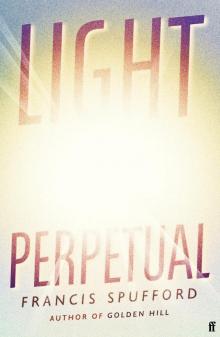 Light Perpetual
Light Perpetual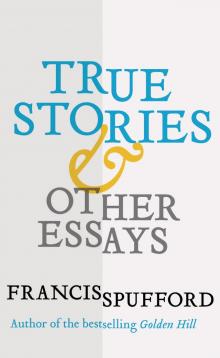 True Stories
True Stories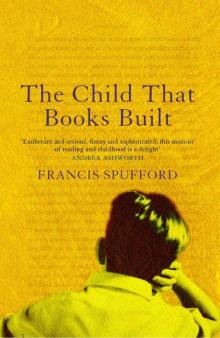 The Child that Books Built
The Child that Books Built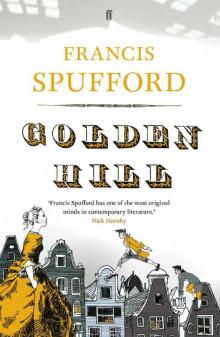 Golden Hill
Golden Hill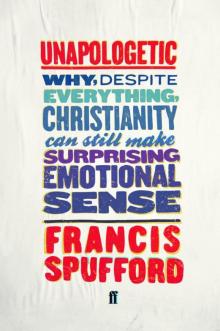 Unapologetic
Unapologetic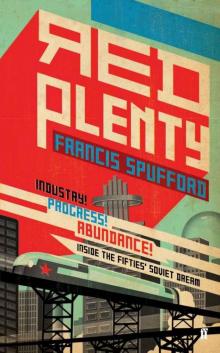 Red Plenty
Red Plenty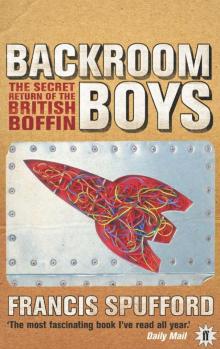 Backroom Boys
Backroom Boys